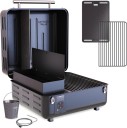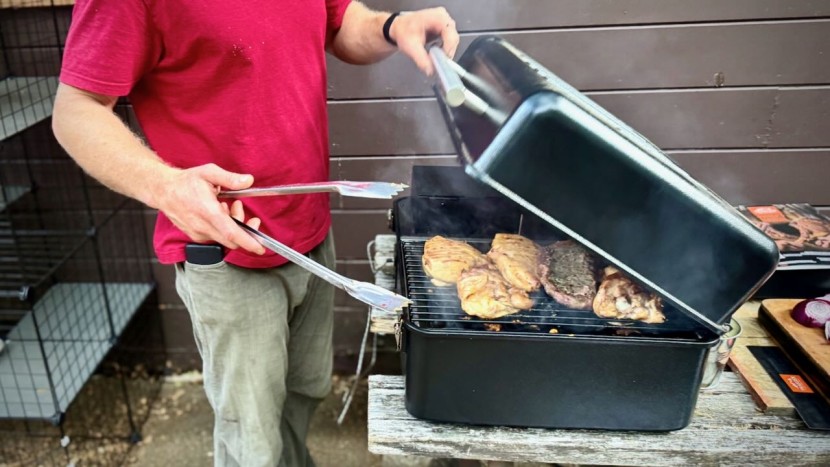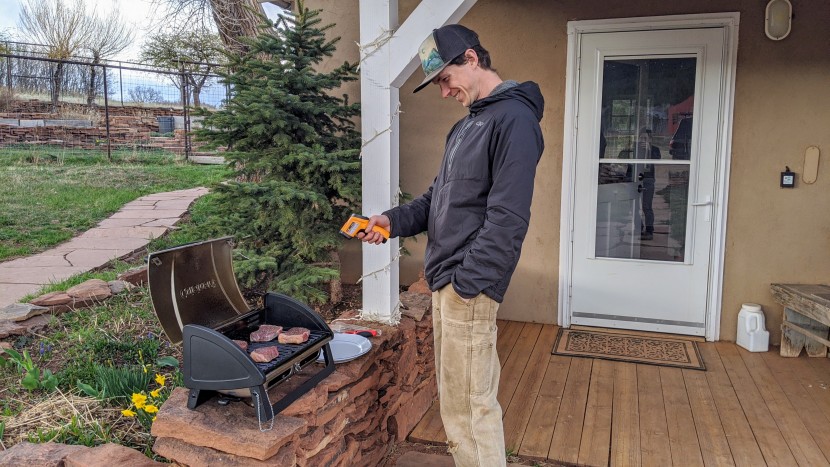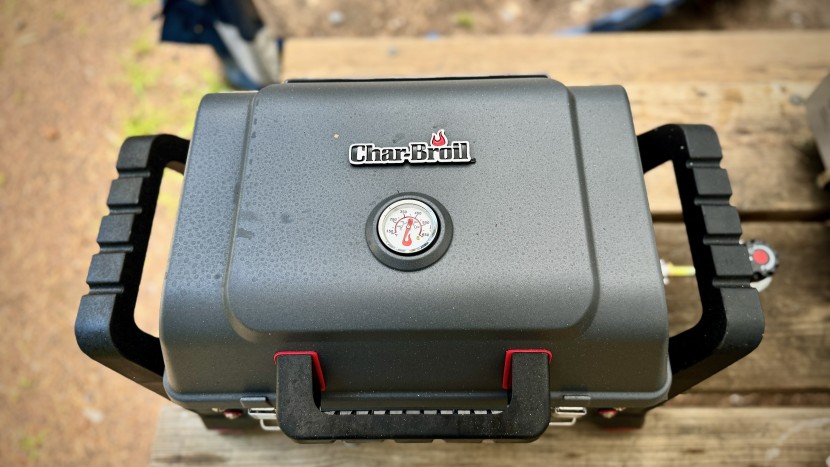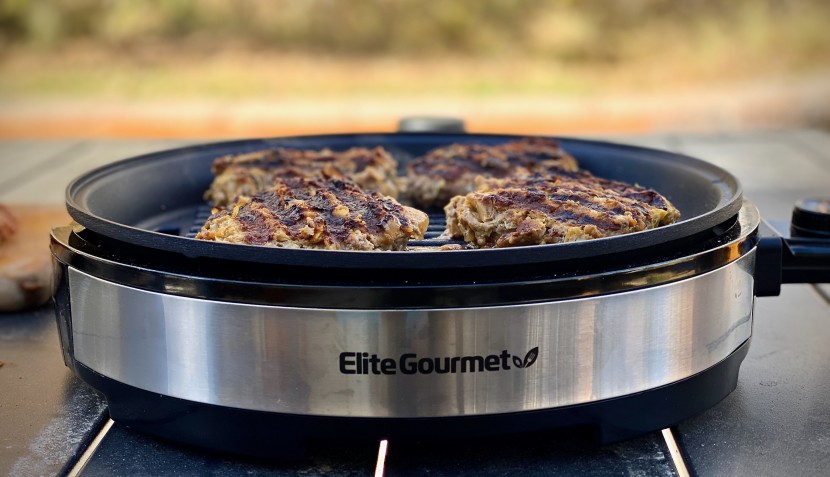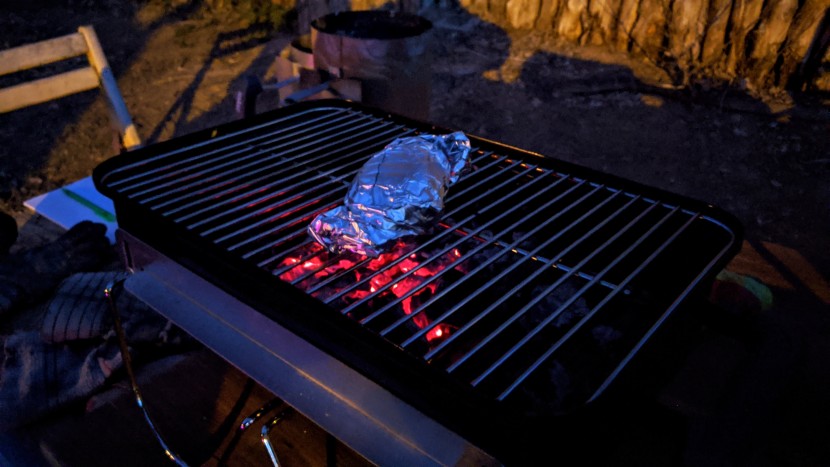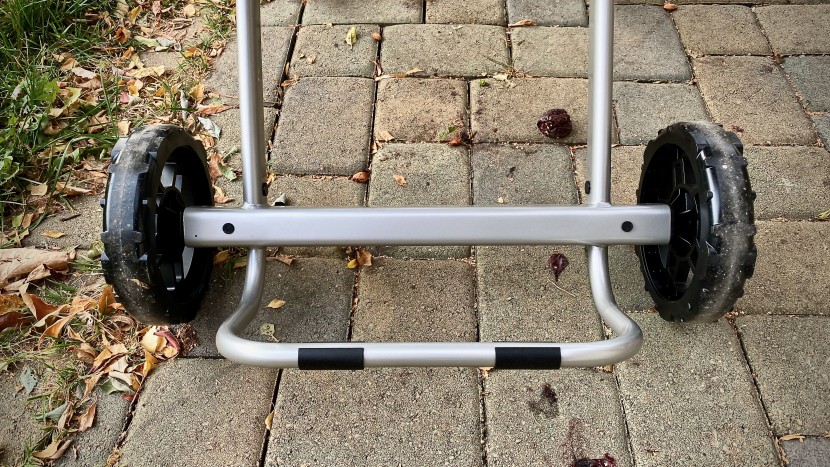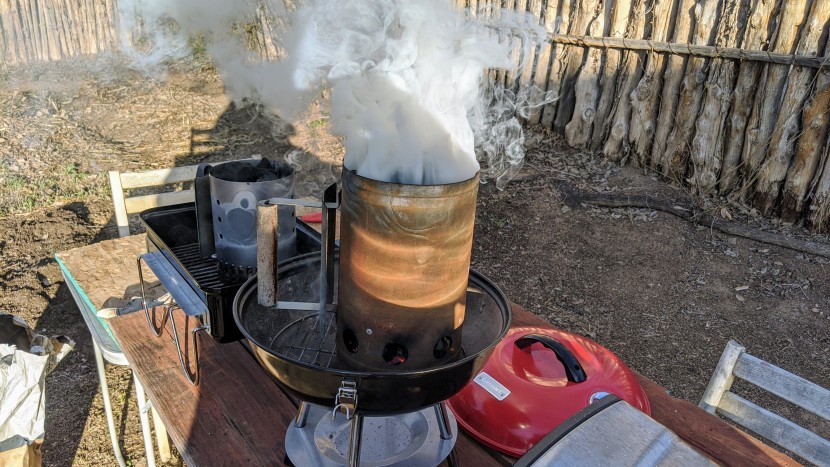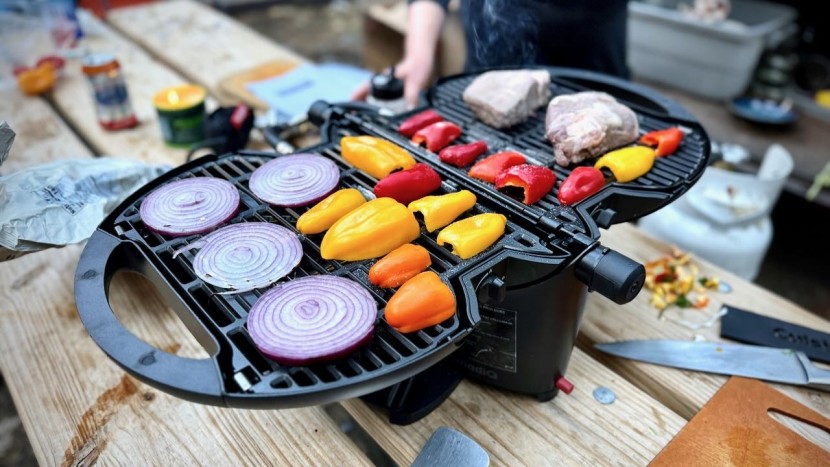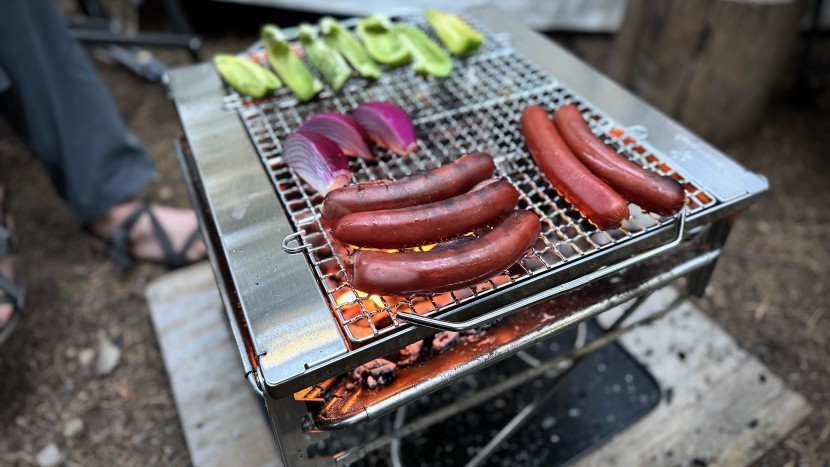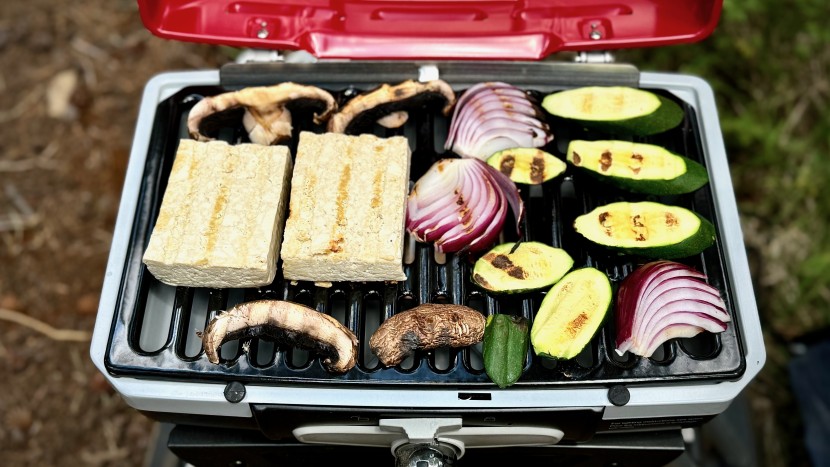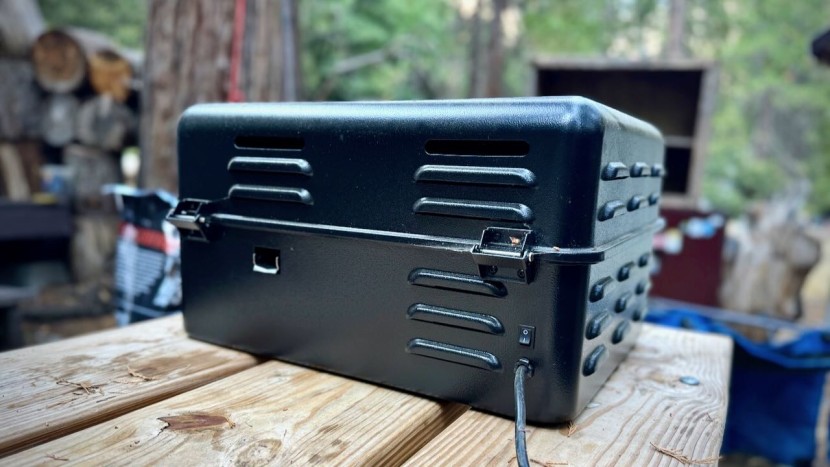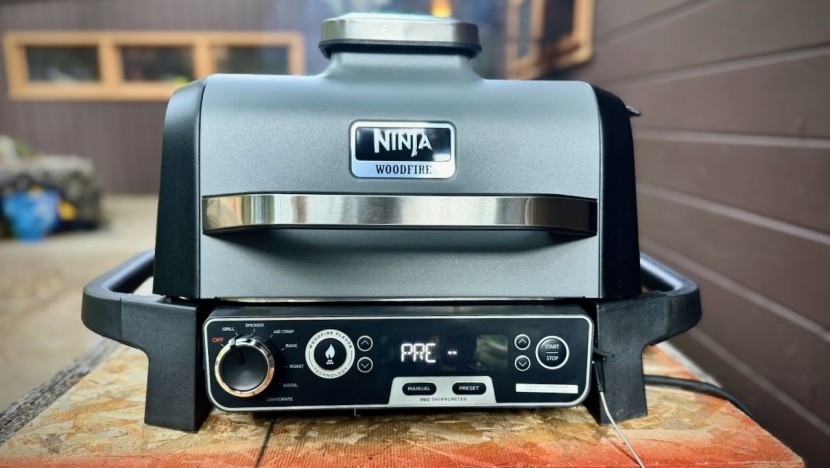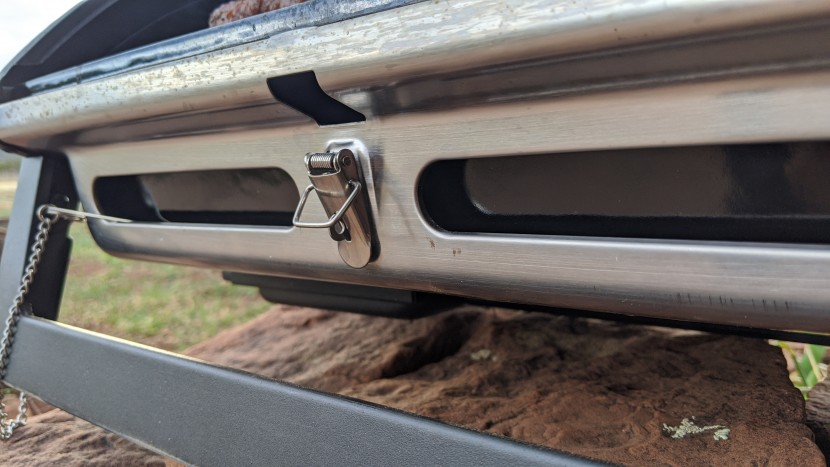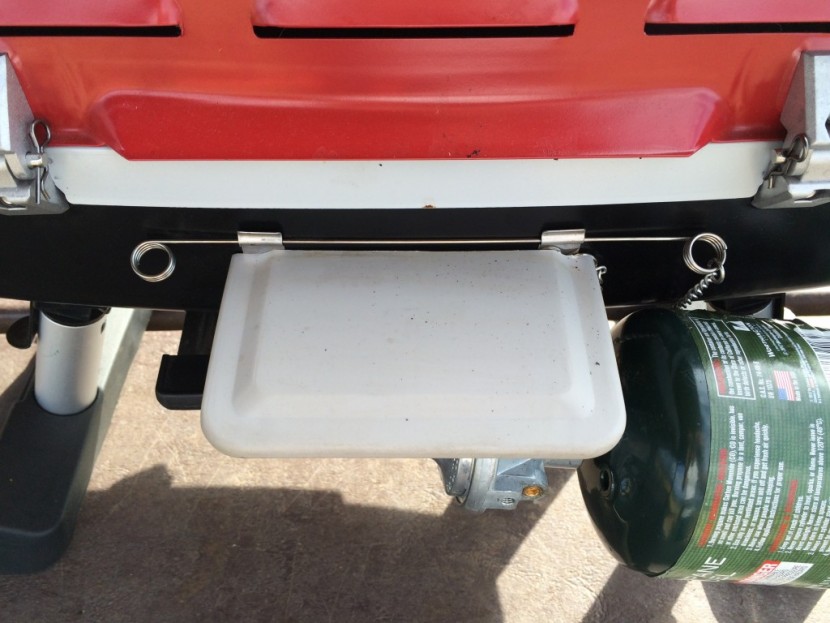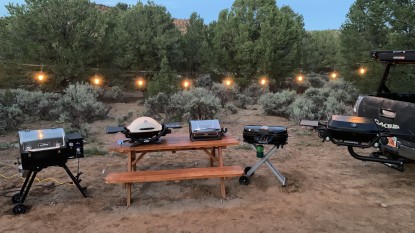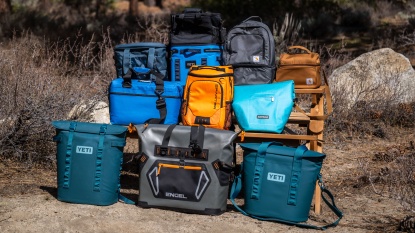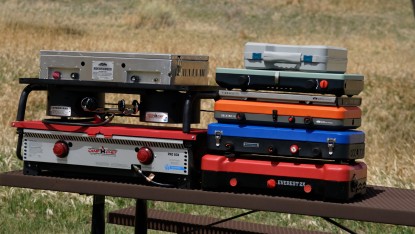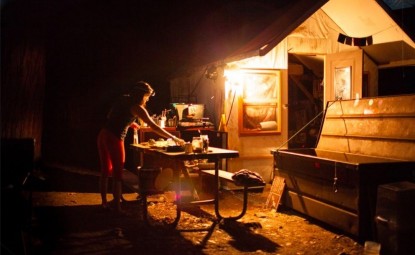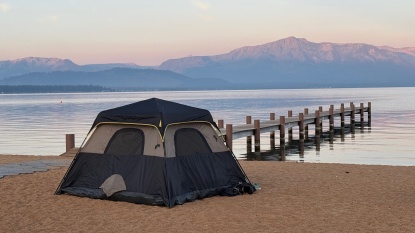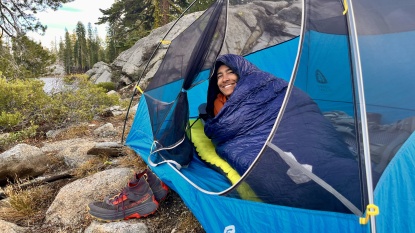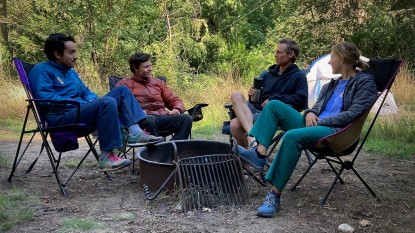Portable grills provide a rewarding cooking and dining experience in the outdoors. While camping stoves can make cooking feel more like a chore, travel BBQs can turn any gathering into a cookout, whether at a campsite, state park, on the beach, or tailgating. All in all, they are a simple solution for cooking an excellent meal away from home. This article helps you focus on the performance and features you need from your next portable grill.
Types
There are two main types of portable grills: portable propane gas and portable charcoal models. There are sub-genres — “infrared” gas-options — and exceptions to the two major grilling methods — mainly electric models. There is also the option for grills that utilize butane as a more efficient and lighter-weight fuel source that especially comes in handy with portable grills. That being said, the majority of portable grills fall under the two main types, so let's examine the pros and cons of each:
Gas
Pros
- Propane is easily accessible and cheaper than charcoal
- Easy and convenient to light
- With the right controller, grilling temperature is easy to manage
Cons
- Gas grills tend to be more expensive, and more complicated to fix
- Cooking over gas doesn't always afford the same flavor
- Most propane grills aren't capable of reaching the same heat as charcoal
Charcoal
Pros
- Charcoal grills are simple, more portable and less expensive than gas-powered competitors
- Manipulating the coal bed allows for maximum control over heat zones
- The flavor of pit-cooking is inimitable
Cons
- Charcoal is messy, and can be expensive when compared to propane canisters
- You'll need to additionally purchase a charcoal chimney to light the grill
- Charcoal grills tend to give off lots of smoke, and may actually be banned in some places, like apartment complexes.
Pellet
Pros
- Easy to use, often operating within an automatic system powered by electricity
- Easy to maintain consistent heat due to digital controllers releasing pellets at the appropriate time
- Eco-friendly as wood is a renewable resource
- Excellent smokey flavor depending upon the type of wood pellets being used
Cons
- Typically more expensive than propane or charcoal grills
- Require electricity
- Potential exposure to harmful chemicals released in the wood
Output Power
While BTU output begins the discussion on how much power and heat a grill puts out, it isn't the entire story. BTUs (British thermal units) are a measurement of the amount of energy needed to heat a pound of water by a single degree Fahrenheit. There are other factors, though, that also factor into the power output of a grill, like the size and materials of the grilling surface, as well as the overall design.
BTU is a standard measurement of heat output, but only for a consistent heat source like a gas burner. As a result, it's simply not possible to measure the heat output of a charcoal grill in the same way. Charcoal has the capability of producing temperatures in excess of 700℉, but that all depends on how much coal fits underneath the grilling surface, and how well the chef is able to stoke them for maximum output.
Consider what you like to cook before being swayed by high BTU outputs. For simple meals like brats, burgers, and veggie kabobs, you likely don't need a ton of BTUs. Depending on the product design, you might even save fuel by opting for fewer BTUs. For example, one the grills that we tested which features the lowest amount of BTU output, offers a very light and convenient design that evenly grills a variety of foods. Conversely, the infrared grills in our review have amazing maximum power output yet lack the close control for low-and-slow grilling when it comes to poultry and vegetables.
Burner Control
Burner Control is one of the most important of all the metrics tested. Inadequate burner control or ability to manage temperature zones on the grilling surface can be inefficient and frustrating. Unfortunately, it can be challenging to predict what kind of burner control a grill will have without using it. You can go online and research whether or not the product you are contemplating purchasing runs hot or cool (most reviews will state whether it grills hot and evenly or not) but keep your eye out for a couple of crucial factors.
The first for gas models is whether the grill contains more than one burner — products with multiple burners are definitely easier to control. If you only need to heat up one side for a small amount of food to cook, you can, making it both more versatile and gas-efficient. Also, you can have one side set to be hotter or cooler than the other for cooking different kinds of things, which is nice for cooking many ingredients at once. Another thing to look for are covers that fit over the burners — this prevents grease from dripping directly onto the flames, which is a common cause for flare-ups and uneven cooking temperatures.
While charcoal models obviously won't feature the same adjustment knobs as gas grills, many find it easier to control heat zones by manipulating the spacing and piling of a coal bed. Make note of the surface area and total volume of the coal pit. These both contribute to both the overall size — and therefore heat output — of your coal bed, and also your ability to manage the coals without burning yourself. We also really appreciate grates that are easy to remove to access coals during cooking, but that securely lay back in place so that we can easily move food around to particular heat zones.
- Semin Nosrat, from Salt, Fat, Acid, Heat
Portability
The first thing to consider when shopping for a portable grill is… its portability! How much weight are you willing to carry, push, and pull around to get to your next picnic, pre-game, or BBQ? How easily does this grill pack-down, and store in the trunk or truck bed? We consider a grill portable if it weighs less than about 50 pounds, is relatively easy to carry (i.e., one person can carry it up and down stairs), or offers features that allow it to be easily transported. We also consider its packed-size, ease of break-down, and if it has latches to secure the lid — this feature is particularly important for charcoal grills.
The last thing you want to do is to leave your grill behind on adventures because it is too cumbersome or heavy for you to carry or transport. We tested a pretty significant weight range for grills — from 4 up through about 40 pounds — so know what factors into making them portable. Know your carrying capacity, and limit your purchase to something that will be easy for you to maneuver. There are a few types of portable grills: tabletop (some that also offer stands), and cart styles that have two wheels. Tabletop products can be lightweight or heavy, and the cart style products typically run from 40 to 60 pounds.
There are two major reasons for you to consider a portable grill. First, most people want a portable grill for picnicking, tailgating, or car camping. For these uses, size and weight are the primary considerations. Smaller and lighter is better, all else equal. The other common application is for use in more confined living spaces. In short, tabletop models are best for picnicking and camping while stand-alone, roll-away kinds are better for routine home use.
If your neighborhood or building doesn't allow, for one reason or another, outside storage of your grill, having a portable model for home use is your best solution. Additionally, an apartment complex may have rules or regulations against charcoal grills on balconies due to how smokey they can be to ignite.
Cooking Area
Your next consideration, after the importance of the different types of portability, is how much space you need on your grill surface. Do you cook for large groups? Or is it just a couple of you? Do you mainly grill your meat course, or do you also grill vegetables to accompany the main course? Our testing has allowed us to generate some guidelines.
The portable grills we tested range from around 120 to 350 square inches of cooking area. While a smaller cooktop can typically handle around four hamburgers at a time with an inch or so between each patty and two inches around the perimeter, the extra 100-200 square inches means doubling the number of persons you can cook for at one time. Two people can cook all they'd need for a hearty meal on 100-150 square inches. A group of up to four can fit their meat course, carefully, on these same grills. A group of four needs at least 250 square inches to cook veggies and meat together. A group of six or more will likely need to cook in shifts, keep the vegetables off the grill, or choose a non-portable grill type.
Wind Resistance
Wind resistance is an important factor when choosing a product. Look for burner covers, or burners that are not very exposed for optimal wind resistance — often an insulating construction plays a big role in wind resistance. Note additional features like tops that double as wind-walls, or ventilation ports that also serve to protect against gusts. Creative ventilation adjustments, plus a well-designed lid can often be your best defense against a windy day. Consult online reviews — ours and others — for a consensus on the wind resistance to help narrow your selection.
We wish that we could provide more guidance on what makes for a wind-resistant grill. But except for the fact that more power equals more wind resistance, there is no clear pattern that has been revealed to us through years of testing.
Added Features
A thermometer is the best additional feature you can opt for. It is very convenient to know what temperature the grill is, especially for searing. But buyer-beware, these thermometers are not always accurate from model-to-model — it is best to arm yourself with a quality meat thermometer, or go the distance and invest in an infrared thermometer to elevate to pro-status. A hanging warming rack is a nice added feature, as well as side tables and hooks in the front for hanging your grilling tools.
Most portable grills have a backup burner lighting chain system in case the automatic ignite starting mechanism were to go out. The idea is that if you go on a long camping excursion and the ignition starter were to go out, and you can't get to a hardware store, you can place a match or stick or piece of paper into the empty coiled end to place an increased amount of distance between your fingers and the burner when lighting.
There are also some innovative products available on the market today. Check out the infrared only options or more affordable models that offer creative carrying cases that feature cutting boards and storage for your green grenade propane tank.
Conclusion
It can be difficult sorting through options to select the best portable grill for your purposes. We hope that our step-by-step selection process and comparative reviews will help guide you. Remember, first sort out how and where you will predominantly use your grill, and then use our guide to connect you with the best tool for your job.




